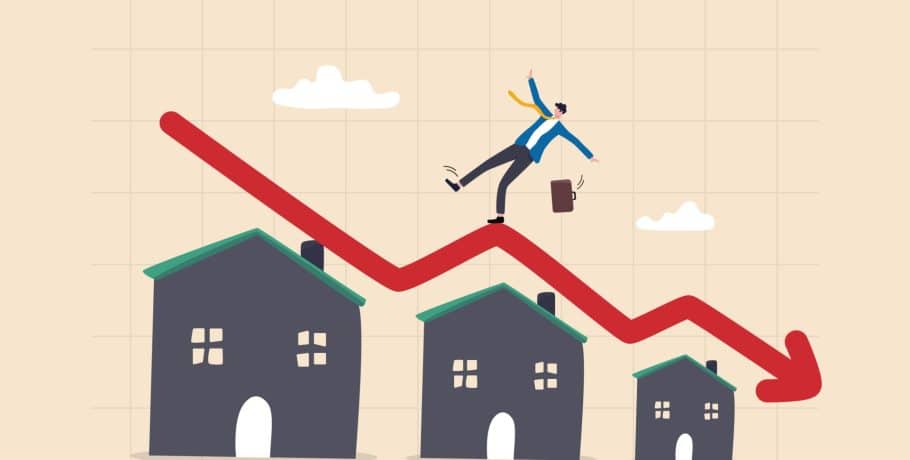Can You Refinance if Your Property Has Dropped in Value?

Refinancing depends on more than just your loan, it also depends on the value of your property.
When prices fall, equity can shrink, and that may affect whether you’re able to switch lenders. The good news? A drop in value doesn’t always mean your options disappear. But it does mean the details matter.
Here’s how refinancing works when your home is worth less than it once was.
If You Still Have 20% Equity, You’re Likely Fine
Let’s say your home has dipped in value but you still own more than 20% outright. That’s usually enough to refinance without too much trouble.
Lenders generally want your Loan-to-Value Ratio (LVR) to be 80% or lower, meaning you own at least 20% of the property’s current value. If you meet that, you’re still in a strong position.
You may have slightly fewer loan options (some lenders offer sharper rates for <70% LVR), but refinancing should still be on the table.
If Your Equity Has Dropped Below 20%, It Gets More Complex
If your LVR has crept above 80%, a new lender may require Lenders Mortgage Insurance (LMI). That can add thousands to your loan, so it’s worth weighing up carefully.
Some lenders won’t allow a refinance at all above 80% LVR, while others might, but you’ll likely pay LMI and may face a higher rate.
In this case, some borrowers choose to wait until they’ve built more equity through repayments or until prices recover. Others may explore whether refinancing with their current bank (a product switch or internal refinance) is possible, which may avoid the need for a new valuation altogether.
If You’re in Negative Equity, Refinancing Isn’t an Option (Yet)
Negative equity means your loan is bigger than the current value of your home. It’s rare, but it happens, especially in markets that drop quickly.
In these cases, lenders won’t approve a refinance, because they can’t fully secure the new loan against the property. That can leave you feeling stuck. But if you can keep making your repayments, nothing changes day-to-day.
You’ll just need to focus on rebuilding equity over time—through repayments or waiting for the market to recover. In the meantime, it may be worth talking to your current bank to see if they’ll offer a better rate to keep your business.
Some Lenders Are Becoming More Flexible
Recently, a few lenders have introduced more flexible policies for borrowers with clean repayment histories. Some are offering refinances up to 90–95% LVR using a reduced serviceability buffer.
These aren’t available everywhere and may still involve LMI, but they’re a sign that options may exist, even if your equity is tight. It’s worth speaking with a broker to see what’s possible.
What You Can Do
- Check your current LVR.
Online tools or recent sales in your area can help you estimate your home’s value. If you’re near the 80% mark, a small repayment or a kind lender valuation might tip the balance. - Negotiate with your current lender.
Even if switching isn’t possible, you may be able to ask your bank for a rate reduction. A good payment history can go a long way. - Watch the market.
Property prices are cyclical. If values are on the way back up, you might be in a better position sooner than you think. - Be realistic about equity access.
If you’re hoping to refinance to access funds, keep in mind that lower valuations also reduce how much equity you can draw. You might need to adjust your plans or wait it out.
Final Thought
A drop in value doesn’t automatically rule out refinancing, but it can make the process trickier. If you’re unsure where you stand, a quick check-in with a broker can help you understand your options and the best timing.
And if you’re not quite ready to refinance, that’s okay. You’re not stuck forever. Keep making progress, stay informed, and when the time is right, the door will reopen.

